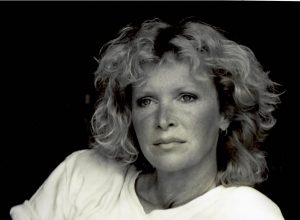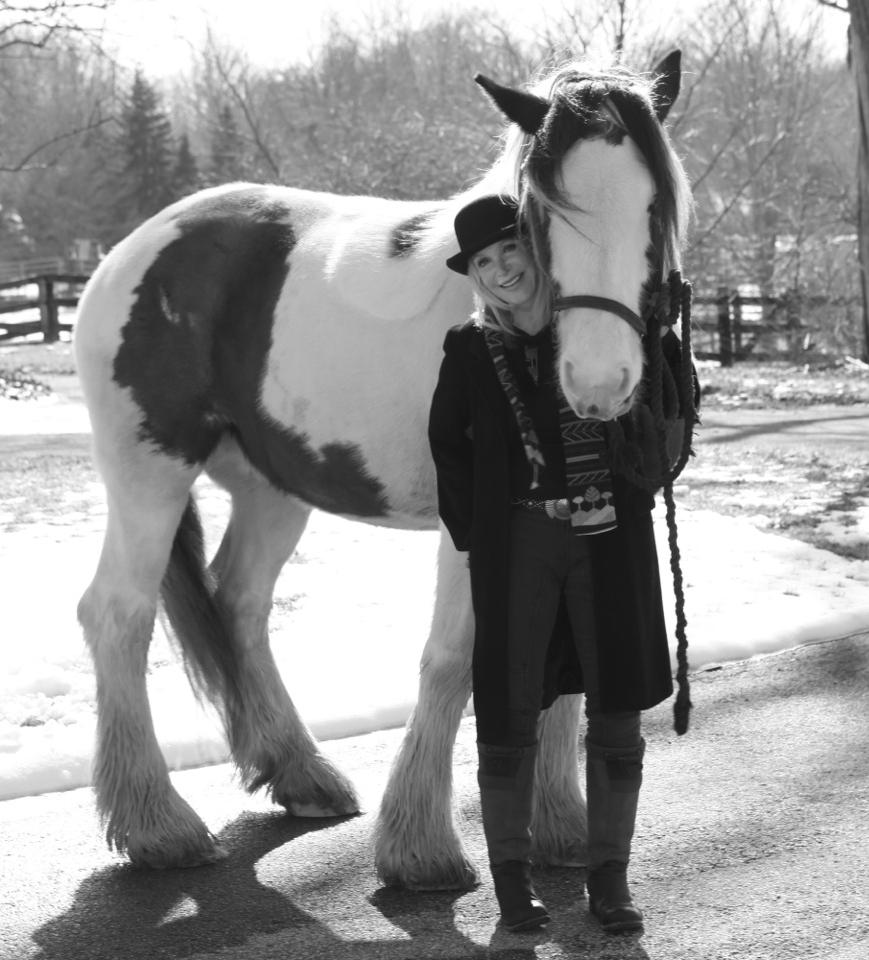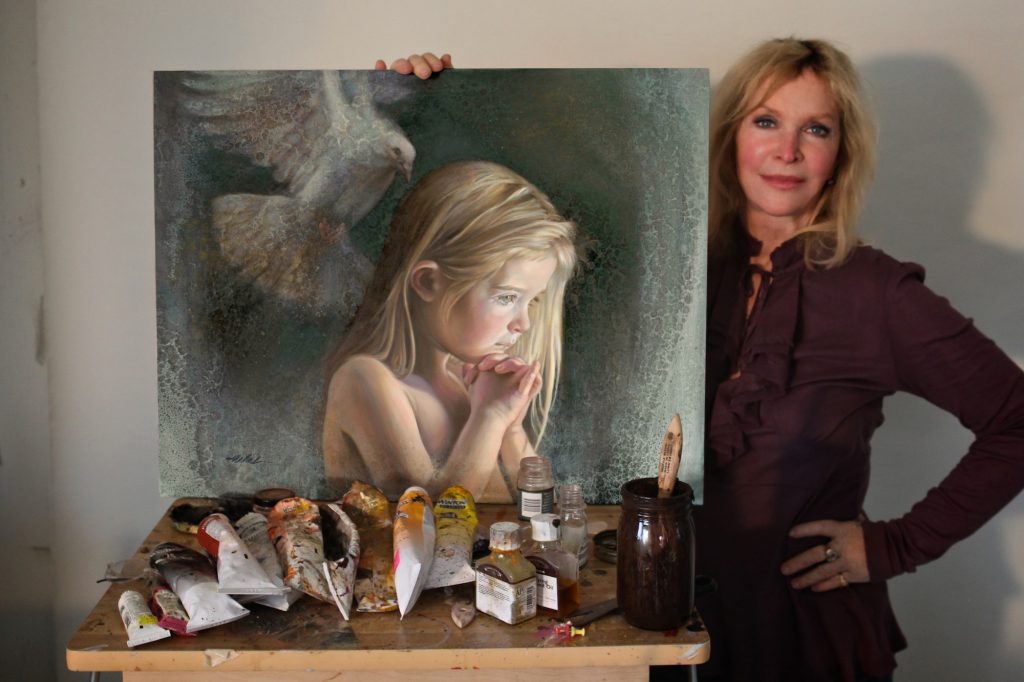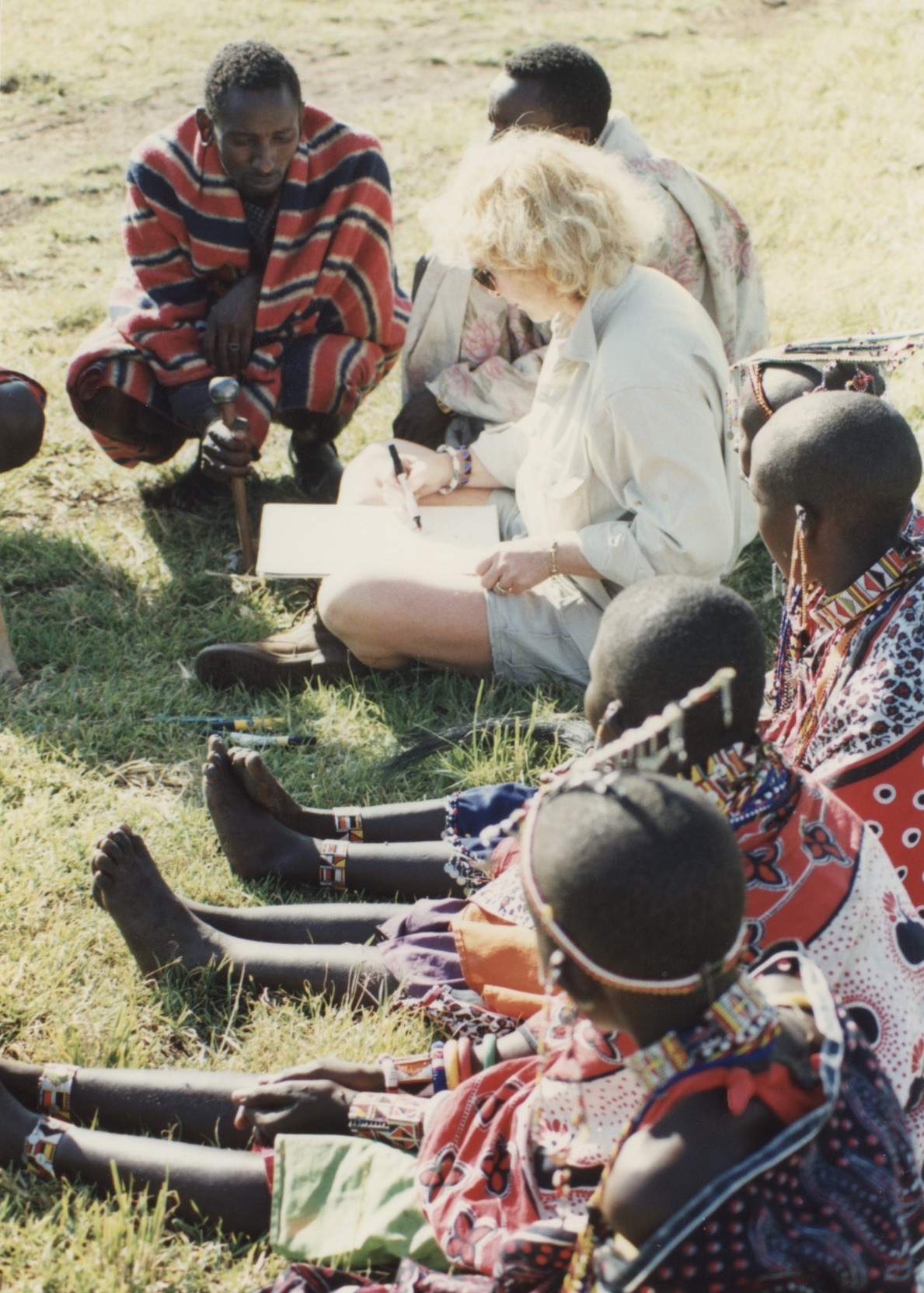
Photo info ...
Credit: N.A. Noël Studio, Inc.View Source
(Oct. 29, 1945-Aug. 16, 2020). Born in and raised in Indianapolis, Nancy Noël was the daughter of Jerome Noël and Louise Hanley. Her grandfather was William Hanley, an early executive and engineer at who designed and patented innovative advancements for the production of the gel cap.
Noël struggled with dyslexia as a child, and an eighth-grade teacher told her she would amount to nothing. Undeterred, she attended St. Mary’s Academy of South Bend and earned a fine arts degree from Mount St. Joseph University in Cincinnati. Against the wishes of her parents, she pursued her art career, first sketching portraits at the annual at the for $35 per portrait, then opening Noël Gallery in in 1971, where she sold other artists’ work.

In the 1970s, Noël purchased land in Zionsville where she could board and ride her horse. After marrying local real estate developer Gerald Kosene, the two established the 40-acre Llandfair Farm. Home to llamas, dogs, cats, horses, raccoons, ducks, pigs, and exotic birds, Llandfair provides animal therapy programs to children at , as well as for adults with special needs.
After she began dabbling in oil paintings, Noël started to create her iconic portraits of animals and children. She often used the professional name N. A. Noël, thinking it gave her an air of distinction.
Noël’s Americana themes and portraiture style, though considered risky, failed to hamper her success. By the 1980s, she published prints of her work, which proved so popular that soon she went into the distribution business.
The inspiration for much of Noël’s work could be found in Amish communities within driving distance of her home in Zionsville or thousands of miles away in Africa. Noël traveled to Kenya multiple times to paint the Massai people in Kenya and Tanzania. She found a shared thread in the lives of Africans and Amish people. Both are entrenched in their communities and have a distinctive dress code that their respective cultures prescribe.

By the 1990s, Noël gained international fame for her paintings of animals, children, Amish life, angels, and African people. Her poster reproductions outsold Picasso posters and kept pace with Monet’s. Noël’s signature style remained in depictions of youth. Celebrities commissioned her to paint portraits of their children. Her works hang in the homes of Oprah Winfrey and Robert Redford, and her African painting titled “The Matriarch” hangs in the National Museum of Women in the Arts in Washington D.C.
Some of Noël’s works of art also are featured in the 2018 documentary Women Like Us: Three Journeys One Mission to Change the World, produced by the Women Like Us Foundation. The film follows three women tackling social injustice in Kenya and the U.S.

In 1999, Noël established the N. A. Noël Academy in Kenya. She first supplied meals, safe water, medical care, school supplies, and security for more than 100 children in preschool in Mbita, Kenya. In the past 20 years, 636 students have graduated from the academy to the senior primary schools within the county. Her work continues at the school that bears her name. The academy enrolls 260 children, many of whom have been orphaned by the AIDS pandemic or are infected themselves. Noël’s philanthropy in Kenya, however, went beyond children. Because of her love of animals, she also became an outspoken activist for the rescue of endangered rhino populations.
Noël was one of 20 distinguished women honored at the National Gallery of Art in Washington, D.C., for their achievements and courageous life choices. Other recipients included Michelle Obama, Sonia Sotomayer, Kathleen Turner, and Hillary Clinton.
In 2005, Noël purchased a Victorian-era Methodist church in the heart of Zionsville. Called The Sanctuary, she spent 10 months renovating the church into the Noël Gallery, which holds a full collection of her work. Ten years later she opened her last gallery in Aspen, Colorado.

Help improve this entry
Contribute information, offer corrections, suggest images.
You can also recommend new entries related to this topic.